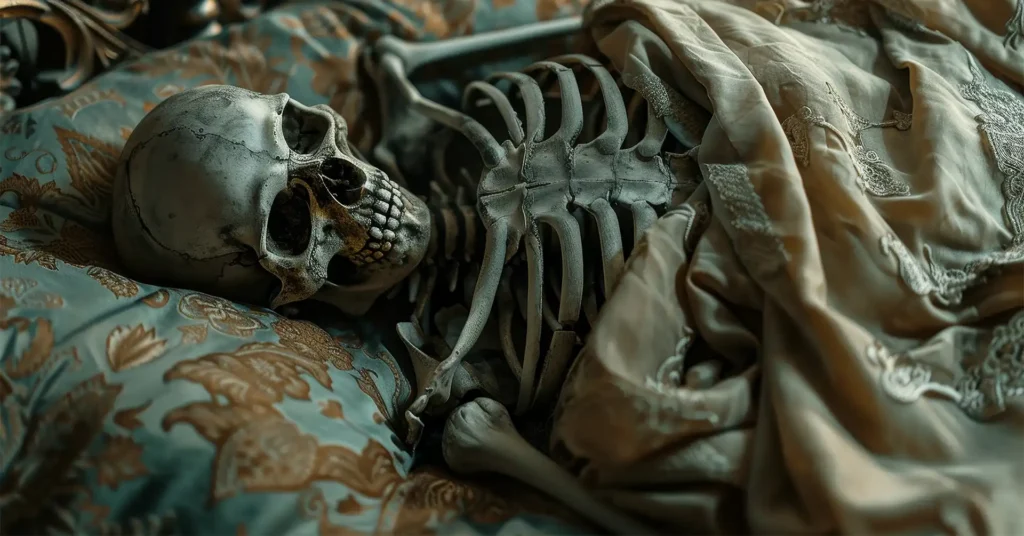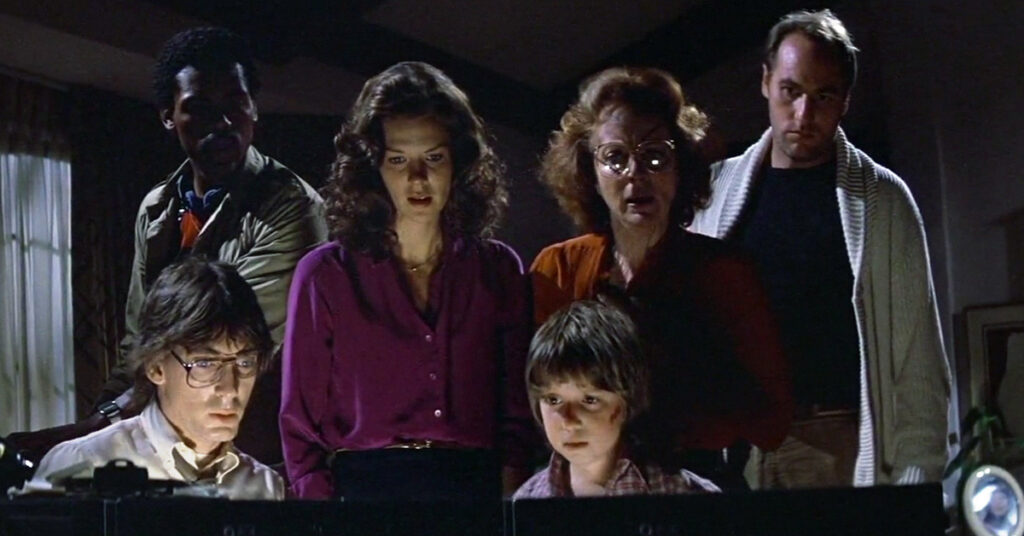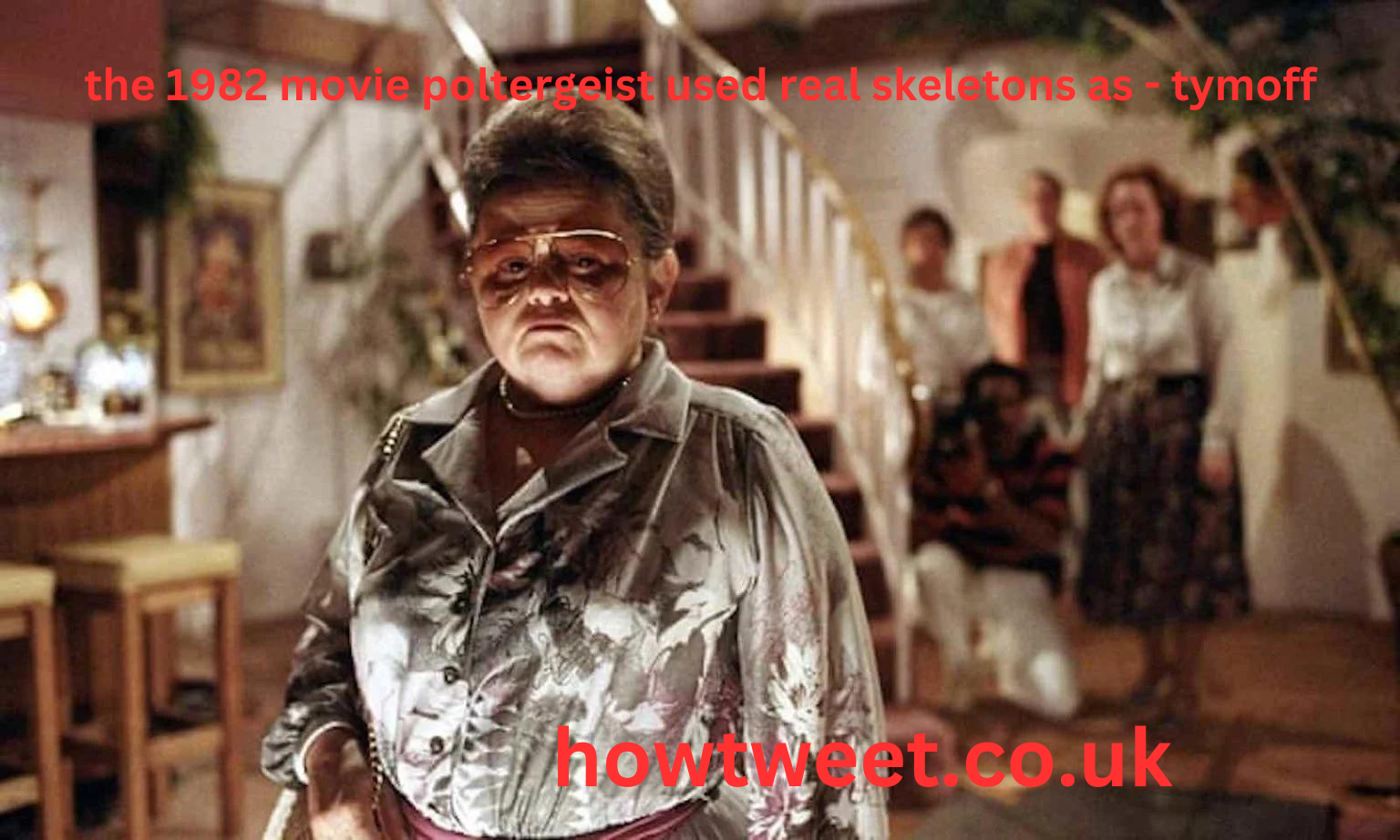In 1982, a film called “Poltergeist” captivated audiences with its chilling tale of a family haunted by malevolent spirits. The 1982 Movie Poltergeist Used Real Skeletons Over the years, it has become iconic not just for its horror elements, but also for the dark legends surrounding its production. One such legend claims that real skeletons were used during the filming, particularly in one memorable scene. This article delves into the veracity of that claim, examining the evidence and exploring the broader implications of such a practice.
Background of “Poltergeist” (1982)
The Making of the Movie
Directed by Tobe Hooper and produced by Steven Spielberg, “Poltergeist” was a groundbreaking film that blended supernatural horror with a compelling family drama. The film’s plot centers around the Freeling family, whose home becomes a battleground between the living and the dead. The special effects, storytelling, and memorable performances made it a standout in the horror genre.
The Cultural Impact of “Poltergeist”
“Poltergeist” was more than just a box office success; it left a lasting imprint on popular culture. Its catchphrase, “They’re here,” became instantly recognizable, and the film’s influence can be seen in countless other horror movies and media. It also sparked numerous discussions about paranormal phenomena and the ethics of horror filmmaking.
The Urban Legend: Real Skeletons in “Poltergeist”
Origins of the Legend
The legend that real skeletons were used in “Poltergeist” began shortly after its release. Rumors started circulating, fueled by behind-the-scenes stories and the eerie nature of the film itself. Over time, these rumors solidified into a widely believed urban legend.
Why Use Real Skeletons?
The reasoning behind using real skeletons, as per the legend, was cost-related. In the 1980s, acquiring real skeletons was supposedly cheaper and easier than creating realistic plastic replicas. This notion adds a macabre layer to the film’s already terrifying atmosphere.

Filming the Infamous Pool Scene
Scene Description
One of the most notorious scenes in “Poltergeist” involves JoBeth Williams’ character, Diane, being dragged into a muddy pool filled with skeletons during a supernatural storm. The scene’s realism and intensity are key reasons why the legend about real skeletons gained traction.
Behind-the-Scenes Accounts
Various accounts from the cast and crew have added to the legend. JoBeth Williams herself has mentioned in interviews that she was told the skeletons were real. Special effects artist Craig Reardon, however, has provided a different perspective, claiming they used plastic models. The conflicting stories have only fueled the mystery.
Verification and Evidence
Statements from the Crew
Craig Reardon, who worked on the special effects for “Poltergeist,” has stated in interviews that the skeletons were indeed real, purchased from a medical supply company. These statements lend credence to the legend, though other crew members have remained silent or offered conflicting views.
Analysis of Props and Special Effects
Examining the props and special effects techniques of the early 1980s, it’s plausible that real skeletons could have been used. At the time, realistic plastic replicas were not as advanced as today, making real skeletons a practical choice for achieving a convincing look.
Ethical Considerations
Use of Human Remains in Media
The use of real human remains in films and other media raises significant ethical questions. While it might achieve a level of authenticity, it also shows a lack of respect for the deceased and can be distressing for actors and audiences alike.
Modern Standards and Practices
Today, the use of real human remains in filmmaking is heavily regulated, with strict guidelines to ensure ethical standards. Modern special effects have advanced to the point where realistic props can be made without resorting to such controversial methods.
Impact on the Cast and Crew
Psychological Effects
The knowledge that real skeletons were used could have a profound psychological impact on the cast and crew. JoBeth Williams, for instance, has spoken about her discomfort during the pool scene, suggesting that the use of real skeletons added an unsettling layer to the filming experience.
Long-term Consequences
The rumors and the resulting psychological effects contributed to the broader narrative of the so-called “Poltergeist Curse,” which has been linked to several tragic events involving the cast and crew in the years following the film’s release.

The “Poltergeist Curse”
Notable Incidents and Deaths
The “Poltergeist Curse” refers to the string of unfortunate events and untimely deaths that befell several people associated with the film. Notably, young actress Heather O’Rourke, who played Carol Anne, died at the age of 12, and Dominique Dunne, who played her older sister, was murdered shortly after the film’s release.
Connection to the Real Skeletons Legend
The supposed use of real skeletons in “Poltergeist” is often cited as a factor contributing to the curse. While there’s no concrete evidence linking these tragic events directly to the skeletons, the eerie coincidence has perpetuated the legend.
Audience Reaction and Public Perception
Initial Reception
When “Poltergeist” was first released, audiences were both terrified and fascinated. The film’s realistic effects and intense scenes left a lasting impression, and the rumors about real skeletons only added to its mystique.
Legacy of the Legend
Over the years, the legend of the real skeletons has become a key part of the film’s legacy. It continues to be a topic of interest and debate among horror fans and film historians, contributing to the enduring fascination with “Poltergeist.”
Debunking Myths
Skeptical Views
Skeptics argue that the legend of the real skeletons is just that—a legend. They point to advances in special effects and the availability of high-quality replicas as reasons to doubt the necessity of using real skeletons.

Confirmed Facts
Despite the skepticism, some facts confirm that real skeletons were indeed used in some scenes. Craig Reardon’s statements and the practices of the time provide a basis for believing that the legend has elements of truth.
Conclusion
The legend of real skeletons used in the 1982 movie “Poltergeist” is a fascinating blend of horror, mystery, and ethical dilemmas. While there is evidence to support the claim, the full truth may never be known. What remains clear is the profound impact this film has had on audiences and its lasting legacy in the world of horror cinema. The story of the skeletons adds an extra layer of intrigue to an already compelling piece of film history.
FAQs
Q1: Were real skeletons really used in “Poltergeist”? Yes, according to special effects artist Craig Reardon, real skeletons were used in some scenes, purchased from a medical supply company.
Q2: Why did the filmmakers choose to use real skeletons? The primary reason given is cost. At the time, real skeletons were cheaper and more readily available than realistic plastic replicas.
Q3: How did the use of real skeletons affect the cast and crew? Knowing that real skeletons were used added a layer of discomfort and psychological stress for some cast members, contributing to the eerie atmosphere on set.
Q4: What is the “Poltergeist Curse”? The “Poltergeist Curse” refers to a series of tragic events and untimely deaths involving cast and crew members, often linked to the supposed use of real skeletons in the film.
Q5: Are real skeletons still used in films today? No, modern filmmaking standards and ethical considerations have largely eliminated the use of real human remains in favor of advanced special effects and realistic props.
